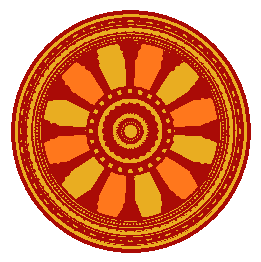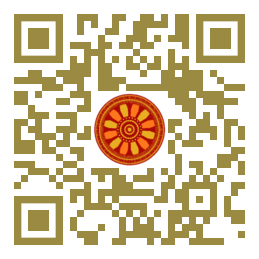
:: International Transaction Journal of Engineering, Management, & Applied Sciences & Technologies
http://TuEngr.com

ISSN 2228-9860
eISSN 1906-9642
CODEN: ITJEA8
FEATURE PEER-REVIEWED ARTICLE
Vol.12(12) (2021) |
Performance of Traditional Iraqi Courtyard Houses: Exploring Morphology Patterns of Courtyard Spaces
 Mohamed Almumar, Salahaddin Baper(Department of Architecture, Salahaddin University, Erbil, Kurdistan Region, IRAQ).
Mohamed Almumar, Salahaddin Baper(Department of Architecture, Salahaddin University, Erbil, Kurdistan Region, IRAQ).
Disciplinary: Architecture Science & Engineering.
doi: 10.14456/ITJEMAST.2021.250
Keywords: Spatial form; Morphology analysis; Simulation model; Built-up masses; Covered and open outdoor spaces; Courtyard structure; Courtyard form type; Courtyard aspect ratio; Habitable room.
AbstractThe multiplicity of the courtyard form types of the traditional Iraqi house hindered a model formulation that can explain its morphology characteristics. Exploring these characteristics could improve architectural design knowledge. This paper investigated the geometry and positioning of the built-up massing surrounding the courtyard to understand their effect on the formation of the covered and open outdoor spaces. Accordingly, it established a new understanding of the courtyard spatial characteristics and designed a model that simulated the possible courtyard forms. The model simulates 149 courtyard patterns and depicts diagrammatic ground and first floor plans for houses containing these courtyards. Borrowing the extracted courtyard forms could improve the building's functional performance in contemporary architectural design. In subsequent studies, the evaluation of the environmental efficiency of the Iraqi traditional courtyard houses should not be limited to the model with a courtyard surrounded from all sides by walls of equal height. The evaluation may be conducted to the extracted types in the paper simulation model, as they are more representative of reality.Paper ID: 12A12S
Cite this article:
Alsulami, M. (2021). Performance of Traditional Iraqi Courtyard Houses: Exploring Morphology Patterns of Courtyard Spaces. International Transaction Journal of Engineering, Management, & Applied Sciences & Technologies, 12(12), 12A12S, 1-13. http://doi.org/10.14456/ITJEMAST.2021.250
References
- Abass, F., Ismail, L.H. and Solla, M., 2016. A review of courtyard house: history evolution forms, and functions. ARPN Journal of Engineering & Applied Sciences, 11(4), pp.2557-2563.
- Abdulkareem, S., 2012. The adaptation of vernacular design strategies for contemporary building design in Kurdistan. Doctoral dissertation.
- Al-Dioachi, S., 1975. Traditional Mosul House. Popular Iraqi Heritage Journal, 6, pp.22-44. (in Arabic)
- Al-Jameel, Ali Haider and Hassan Haj Kasim 2012. Re- Implementation of Courtyards in Modern House Architecture in Iraq. https://www.researchgate.net/publication/304783905
- Almumar, M.M.S., 2019. Understanding the environmental performance of the Iraqi traditional courtyard house, Is there an order of fa?ades orientation in randomly oriented land plots?. Journal of Building Engineering, 22, pp.140-146.
- Alsultani, Khalid., 2014. Baghdad: those forgotten images. (In Arabic). https://www.arch-news.net
- Al-Zarkani, Khalil Hassan., 2017. The Architecture of the Iraqi Popular House, The House of Al-Baghdadi and Al-Mosili, Material Culture. The Message of Folklore from Bahrain to the World. Number 25. (In Arabic)
- Auda, Raid Mansour., 1988. Evaluation of Courtyard Climatic Efficiency in Traditional House in Baghdad. Thesis, University of Technology Iraq. 125p.
- El Harrouni, Khalid. 2015. Thermal Comfort in Sustainable Traditional Courtyard Houses. Paper presented at the 2nd International Sustainable Building Symposium (ISBS), Ankara, Turkey. 461-463.
- Evans, M., 1980. Housing, climate, and comfort. London: Architectural Press, 175p.
- Ferrer For?s, J.J., 2010. Courtyard housing: environmental approach in architectural education.
- Fouda, Y.E., 2014. The role of physical planning procedures and architectural aspects in maintaining urban form sustainability. International Journal of Sustainable Building Technology & Urban Development, 5(1), 84-98.
- Khan, H.M., 2015. Modelling and thermal optimization of traditional housing in a hot arid area. The University of Manchester, United Kingdom.
- Kwon, C.W. and Lee, K.J., 2016. Investigation of the environmental performance of a transitional space in a UK nursery school. International Journal of Sustainable Building Technology and Urban Development, 7(3-4), pp.153-164.
- Mzoori, M. and Ali, F., 2011. Impact of Spatial Configuration On Functional Efficiency of House Layouts in Erbil City, Iraq from 1900 to 2010. Doctoral dissertation, Universiti Sains Malaysia.
- Ozkan, S., 2006. Foreword-Courtyard: a typology that symbolises a culture. Courtyard housing: past, present and future. Abingdon: Taylor & Francis.
- Pole service-Poland and Dar Al-Imara., 1977. General Housing Program for Iraq. Baghdad Report 1. 183p.
- Sthapak, S. and Bandyopadhyay, A., 2014. Courtyard houses: An overview. Recent Research in Science & Technology, 6(1).
- Vedhajanani, B. and Rose, A.L., 2016. Contextual comparison of courtyard houses in Tamil Nadu. Indian Journal of Science & Technology, 9(5), pp.1-7.
- Warren, J. and Fethi, I., 1982. de l'article/du chapitre Traditional Houses in Baghdad. distributeur Coach Publishing House.
- Wazeri, Y.H., 2014. Comparative study between three courtyards of traditional houses in Islamic Cairo. Journal of Islamic Architecture, 2(4), pp.171-178.
- Yousuf, S., 1975. Traditional Iraqi House. 6, pp.10-19. (in Arabic).
Other issues:
Vol.12(13)(2021)
Vol.12(11)(2021)
Vol.12(10)(2021)
Archives
Call-for-Papers
Call-for-Scientific PapersCall-for-Research Papers: ITJEMAST invites you to submit high quality papers for full peer-review and possible publication in areas pertaining engineering, science, management and technology, especially interdisciplinary/cross-disciplinary/multidisciplinary subjects.
To publish your work in the next available issue, your manuscripts together with copyright transfer document signed by all authors can be submitted via email to Editor @ TuEngr.com (no space between). (please see all detail from Instructions for Authors)
Publication and peer-reviewed process:
After the peer-review process (4-10 weeks), articles will be on-line published in the available next issue. However, the International Transaction Journal of Engineering, Management, & Applied Sciences & Technologies cannot guarantee the exact publication time as the process may take longer time, subject to peer-review approval and adjustment of the submitted articles.